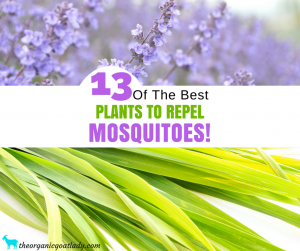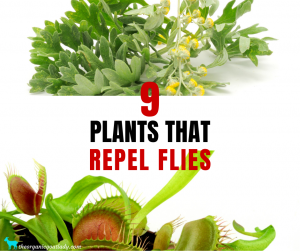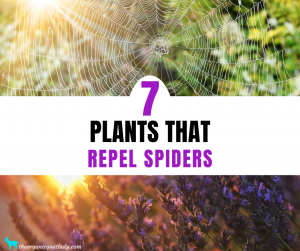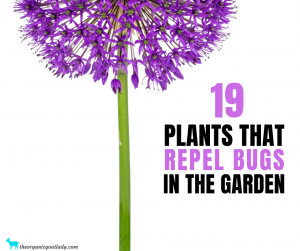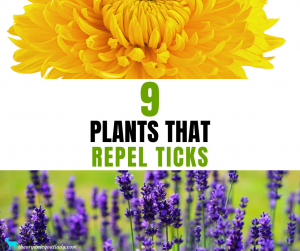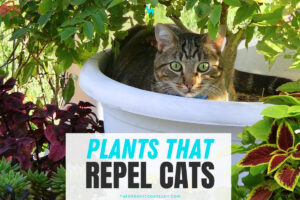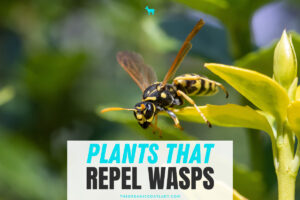Are you trying to keep slugs out of your vegetable garden or are you trying to find flower bed ideas to keep those pesky slugs away? Here you will find what plants repel slugs as well as different ways to get rid of slugs.
This site contains affiliate links. If you make a purchase using one of these links, I may earn a commission. Please click here for more information about cookies collected and our privacy policy.
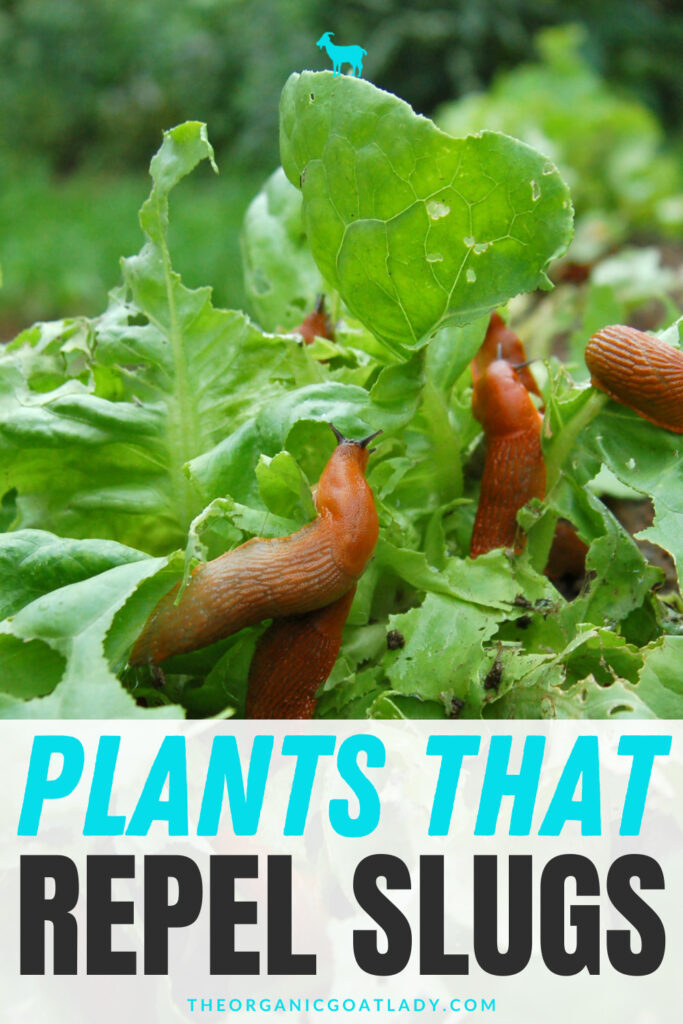
What plants repel slugs?
Several plants are known to repel slugs due to their strong scents or natural chemical compounds that slugs find unappealing. Below we discuss the different types of plants slugs hate.
Why should I try to repel slugs?
Efforts to repel slugs in your garden or outdoor spaces are often undertaken for several reasons, as slugs can have negative impacts on plants and ecosystems. Here are some reasons why you might want to consider managing or repelling slugs:
1. Plant Damage: Slugs are herbivorous and feed on a variety of plants. They can devour the leaves, stems, and fruits of your garden plants, causing aesthetic damage and reducing crop yields. In severe infestations, they can even kill young plants.
2. Economic Impact: For gardeners, farmers, and those who rely on plant-based agriculture, slug damage can lead to economic losses. Reduced crop yields can translate into lower profits.
3. Ecosystem Disturbance: Slugs can disrupt natural ecosystems by consuming native plants and potentially outcompeting other native species. Invasive slug species, in particular, can have detrimental effects on local biodiversity.
4. Aesthetic Concerns: Slime trails left by slugs can be unsightly and create a less appealing garden or outdoor environment. Many people prefer to have a well-maintained and visually pleasing outdoor space.
5. Vector for Diseases: Slugs can carry and transmit certain plant pathogens and diseases. When they feed on one plant and then move to another, they can facilitate the spread of these diseases.
6. Pest Attraction: Slugs can attract other pests to your garden. For example, their slime trails can provide a pathway for ants to follow, and the decaying plant matter they feed on can attract other scavengers.
7. Reduced Crop Quality: Even if slugs don’t kill your plants, their feeding can reduce the quality of fruits and vegetables, making them less desirable for consumption.
8. Environmental Stewardship: In some cases, invasive slug species can disrupt local ecosystems, and managing them can be an act of environmental stewardship to protect native plants and wildlife.
9. Gardening Satisfaction: Many people take pride in their gardens and enjoy nurturing healthy plants. Managing slugs can help ensure that your hard work in gardening is not compromised.
It’s worth noting that not all slugs are equally harmful or damaging, and some can play important roles in decomposition and nutrient cycling in ecosystems. Therefore, the decision to repel or manage slugs should be made with consideration of the specific species in your area and the extent of the damage they are causing.
If you choose to repel slugs, there are various methods available, ranging from using slug-resistant plants to employing physical barriers and natural repellents. We discuss the different natural pest control options for slugs below.
Are slugs dangerous to pets?
Slugs themselves are not typically dangerous to pets, but they can pose some risks if ingested or if certain conditions are met:
1. Parasitic Worms (Lungworms): Some slugs and snails can carry parasitic lungworm larvae, such as the Angiostrongylus vasorum worm. If a dog or cat ingests an infected slug or snail, it can become infected with these parasites. Lungworm infections can lead to serious health issues in pets, including respiratory problems, heart issues, and even death if left untreated.
2. Secondary Infections: Ingesting slugs or snails that have been in contact with pesticides or other toxic substances can potentially lead to poisoning in pets.
3. Slime Irritation: The slime that slugs and snails produce can be irritating to the skin, mouth, or digestive tract of pets if they come into contact with it or ingest it. This may result in mild irritation, drooling, or vomiting.
Types of Slugs
There are many different types of slugs found around the world, and they come in various shapes, sizes, and colors.
Slugs belong to the class Gastropoda, which is the same class that includes snails. They are soft-bodied mollusks, and while they share some common characteristics, different species of slugs can exhibit variations in their appearance, habitat preferences, and behavior.
Here are a few examples of common slug types:
1. Garden Slug (Arionidae): These are the most common type of slug found in gardens. They are often brown or gray and can vary in size. Garden slugs are known for their plant-eating habits and can be a nuisance to gardeners.
2. Leopard Slug (Limax maximus): The leopard slug is one of the larger slug species and can reach lengths of up to 8 inches (20 centimeters). They have distinctive markings that resemble leopard spots. Leopard slugs are often found in gardens and are known to feed on decaying plant matter.
3. Banana Slug (Ariolimacidae): Banana slugs are native to North America, primarily the Pacific Northwest. They are called “banana slugs” due to their yellow color and elongated shape. These slugs are often found in forested areas.
4. Spanish Slug (Arion vulgaris): Originally from southern Europe, Spanish slugs have become invasive in many parts of Europe. They are large, brown or orange slugs and are known for their voracious appetite for plants.
5. Black Slug (Arion ater): Black slugs are typically dark-colored, ranging from black to dark brown. They are often found in gardens and agricultural fields and can be significant plant pests.
6. Keeled Slug (Tandonia spp.): Keeled slugs are characterized by a keel or ridge running along the back of their bodies. They are typically grayish-brown and are commonly found in gardens and natural habitats.
7. Tiger Slug (Limax flavus): Tiger slugs get their name from the striped pattern on their bodies. They are often yellow or orange with dark stripes. These slugs are omnivorous and feed on a variety of plant and animal matter.
8. Lettuce Slug (Deroceras spp.): Lettuce slugs are small, grayish-brown slugs that are known for their preference for lettuce and other leafy greens. They can be a particular problem in vegetable gardens.
These are just a few examples of the diverse slug species that exist. It’s important to note that while some slugs are harmless and feed on decaying plant matter, others can be garden pests that damage crops and ornamental plants. Identifying the specific slug species in your area can help you determine the best methods for managing them if they become a problem in your garden or landscape.
Slug Repellent Plants
The following plants can help deter slugs from your garden and are also a great choice to make your flower beds look great:
1. Lavender: Lavender plants can be an effective natural deterrent for slugs due to their strong fragrance, which slugs tend to avoid.They also have a beautiful bloom of purple flowers!
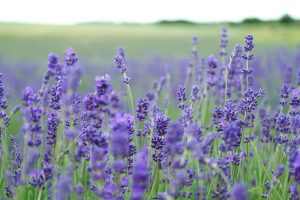
Here’s how you can use lavender to help repel slugs in your garden:
1. Plant Lavender Around Vulnerable Areas: Consider planting lavender around the borders of your garden, near plants that are particularly vulnerable to slug damage. This can create a natural barrier that deters slugs from entering the area.
2. Lavender Pots and Containers: Place lavender plants in pots or containers near your garden beds or planters. Slugs are less likely to crawl into pots with lavender due to the fragrance.
3. Harvest and Dry Lavender: Harvest lavender flowers and dry them. Then, sprinkle the dried lavender around your garden plants or vulnerable areas. You can also create sachets filled with dried lavender and place them strategically in your garden.
4. Lavender Oil Spray: Make a lavender oil spray by diluting a few drops of lavender essential oil in water. Shake and spray this mixture around your garden plants. Reapply after rain.
5. Prune Lavender: Regularly prune your lavender plants to release their fragrant oils, which can enhance their slug-repelling properties.
6. Companion Planting: Consider companion planting lavender with slug-prone plants. Lavender’s scent can help protect nearby plants from slug damage.
Keep in mind that while lavender can be a helpful component of your slug control strategy, it may not provide complete protection on its own. Slugs can still find their way into your garden, especially during wet or humid conditions. Therefore, it’s a good idea to use lavender in conjunction with other natural slug repellents and control methods for more effective results.
2. Rosemary: Rosemary is another one of the aromatic herbs that can be used to help repel slugs in your garden. Slugs tend to avoid the strong scent of rosemary, making it a useful addition to your slug control strategy.
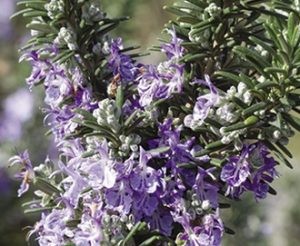
Here’s how you can use rosemary to deter slugs:
1. Plant Rosemary Near Vulnerable Plants: Consider planting the rosemary bush near plants that are particularly susceptible to slug damage. It can act as a protective barrier, discouraging slugs from approaching those plants.
2. Rosemary Pots and Containers: Grow rosemary in pots or containers and place them strategically around your garden beds or near susceptible plants. Slugs are less likely to climb into containers with rosemary due to its fragrance.
3. Rosemary Sprigs: Lay fresh rosemary sprigs on the soil around plants or in areas where you want to deter slugs. This can create a slug-repelling barrier.
4. Rosemary Oil Spray: Create a rosemary oil spray by steeping rosemary leaves in water, then straining and spraying the liquid around your garden. Alternatively, you can dilute rosemary essential oil in water and use it as a spray. Reapply after rain.
5. Companion Planting: Use rosemary as a companion plant with vegetables and herbs that are prone to slug damage. The scent of rosemary can help protect nearby plants.
6. Prune Rosemary: Regularly prune your rosemary plants to release their aromatic oils. This will enhance their slug-repelling properties.
Remember that while rosemary can be a useful natural slug deterrent, it may not provide complete protection on its own. Combining rosemary with other slug control methods, such as those listed below can be more effective in managing slug populations. Regular monitoring of your garden for slug activity and prompt action when slugs are present are also essential components of successful slug control.
3. Mint: Mint plants can be used to help repel slugs in your garden due to their strong aroma, which has a deterrent effect on slugs.
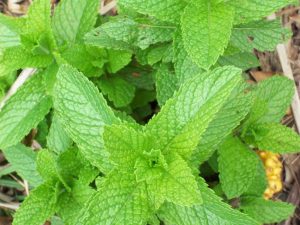
Here’s how you can use mint to deter slugs:
1. Plant Mint Near Vulnerable Plants: Consider planting mint near plants that are particularly susceptible to slug damage. The strong scent of mint can act as a natural barrier, discouraging slugs from approaching those plants.
2. Mint Pots and Containers: Grow mint in pots or containers and place them strategically around your garden beds or near susceptible plants. Slugs are less likely to crawl into containers with mint due to its fragrance.
3. Mint Leaves: Scatter fresh mint leaves around the base of plants or in areas where you want to deter slugs. This can create a slug-repelling barrier.
4. Mint Oil Spray: Create a mint oil spray by steeping mint leaves in water, then straining and spraying the liquid around your garden. Alternatively, you can dilute mint essential oil in water and use it as a spray. Reapply after rain.
5. Companion Planting: Use mint as a companion plant with vegetables and herbs that are prone to slug damage. The scent of mint can help protect nearby plants.
6. Prune Mint: Regularly prune your mint plants to release their aromatic oils. This will enhance their slug-repelling properties.
It’s important to note that mint is known for its vigorous growth and can become invasive in garden beds. To control its spread, consider planting mint in containers or pots to contain its growth and prevent it from taking over your garden.
While mint can be a helpful natural slug deterrent, it may not provide complete protection on its own. Combining mint with other slug control methods and regular garden monitoring can be more effective in managing slug populations and protecting your plants from slug damage.
4. Thyme: Thyme plants, with their aromatic leaves and strong scent, can be used to help repel slugs in your herb garden.
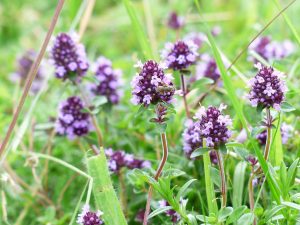
Here’s how you can use thyme to deter slugs:
1. Plant Thyme Near Vulnerable Plants: Consider planting thyme near plants that are particularly susceptible to slug damage. The robust fragrance of thyme can act as a natural deterrent, discouraging slugs from approaching those plants.
2. Thyme Pots and Containers: Grow thyme in pots or containers and place them strategically around your garden beds or near susceptible plants. Slugs are less likely to crawl into containers with thyme due to its scent.
3. Thyme Leaves: Scatter fresh thyme leaves around the base of plants or in areas where you want to deter slugs. This can create a slug-repelling barrier.
4. Thyme Oil Spray: Create a thyme oil spray by steeping thyme leaves in water, then straining and spraying the liquid around your garden. Alternatively, you can dilute thyme essential oil in water and use it as a spray. Reapply after rain.
5. Companion Planting: Use thyme as a companion plant with vegetables and herbs that are prone to slug damage. The scent of thyme can help protect nearby plants.
6. Prune Thyme: Regularly prune your thyme plants to release their aromatic oils. This will enhance their slug-repelling properties.
Thyme is generally a low-maintenance herb and can thrive in a variety of soil types and conditions. It’s a versatile herb that can be used in cooking and as a natural slug deterrent in your garden.
While thyme can be a helpful slug control method, it’s important to keep in mind that no single method is always 100% effective. Combining thyme with other slug control techniques and regularly inspecting your garden for slug activity can provide more comprehensive protection for your plants.
5. Sage: Sage (Salvia officinalis) is an aromatic herb that can be used to help repel slugs in your garden. Slugs tend to avoid the strong scent of sage.
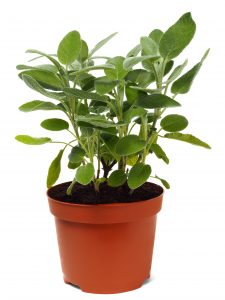
Here’s how you can use sage to deter slugs:
1. Plant Sage Near Vulnerable Plants: Consider planting sage near plants that are particularly susceptible to slug damage. The robust fragrance of sage can act as a natural deterrent, discouraging slugs from approaching those plants.
2. Sage Pots and Containers: Grow sage in pots or containers and place them strategically around your garden beds or near susceptible plants. Slugs are less likely to crawl into containers with sage due to its scent.
3. Sage Leaves: Scatter fresh sage leaves around the base of plants or in areas where you want to deter slugs. This can create a slug-repelling barrier.
4. Sage Oil Spray: Create a sage oil spray by steeping sage leaves in water, then straining and spraying the liquid around your garden. Alternatively, you can dilute sage essential oil in water and use it as a spray. Reapply after rain.
5. Companion Planting: Use sage as a companion plant with vegetables and herbs that are prone to slug damage. The scent of sage can help protect nearby plants.
6. Prune Sage: Regularly prune your sage plants to release their aromatic oils. This will enhance their slug-repelling properties.
Sage is a versatile herb that is not only effective in deterring slugs but also useful in cooking and for its medicinal properties. While sage can be a helpful slug control method, remember that it may not provide complete protection on its own. Combining sage with other slug control techniques and regularly monitoring your garden for slug activity can provide more comprehensive protection for your plants.
6. Chives: Chives (Allium schoenoprasum) are a pungent and aromatic herb that can be used to help repel slugs in your garden. Slugs tend to avoid the strong scent of chives.
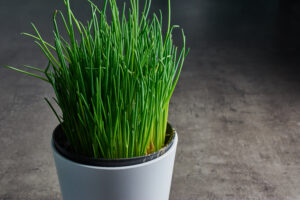
Here’s how you can use chives to deter slugs:
1. Plant Chives Near Vulnerable Plants: Consider planting chives near plants that are particularly susceptible to slug damage. The pungent fragrance of chives can act as a natural deterrent, discouraging slugs from approaching those plants.
3. Chive Pots and Containers: Grow chives in pots or containers and place them strategically around your garden beds or near susceptible plants. Slugs are less likely to crawl into containers with chives due to their scent.
4. Chive Leaves: Scatter fresh chive leaves around the base of plants or in areas where you want to deter slugs. This can create a slug-repelling barrier.
5. Chive Oil Spray: Create a chive oil spray by steeping chive leaves in water, then straining and spraying the liquid around your garden. Reapply after rain.
6. Companion Planting: Use chives as a companion plant with vegetables and herbs that are prone to slug damage. The scent of chives can help protect nearby plants.
7. Prune Chives: Regularly prune your chive plants to release their aromatic oils. This will enhance their slug-repelling properties.
Chives are easy to grow and can add a flavorful and decorative element to your garden. While chives can be a helpful slug control method, it’s important to remember that no single method is always 100% effective. Combining chives with other slug control techniques and regularly inspecting your garden for slug activity can provide more comprehensive protection for your plants.
Slug-Repellent Plants
7. Garlic: Garlic (Allium sativum) is a pungent and aromatic plant that can help repel slugs in your garden. Slugs tend to avoid the strong scent of garlic.
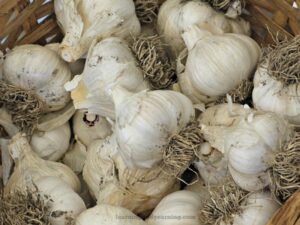
Here’s how you can use garlic to deter slugs:
1. Plant Garlic Near Vulnerable Plants: Consider planting garlic near plants that are particularly susceptible to slug damage. The pungent fragrance of garlic can act as a natural deterrent, discouraging slugs from approaching those plants.
2. Garlic Bulbs and Cloves: Scatter whole garlic bulbs or individual cloves around the base of plants or in areas where you want to deter slugs. You can also bury garlic cloves in the soil near vulnerable plants.
3. Garlic Oil Spray: Create a garlic oil spray by steeping crushed garlic cloves in water, then straining and spraying the liquid around your garden. Reapply after rain.
4. Companion Planting: Use garlic as a companion plant with vegetables and herbs that are prone to slug damage. The scent of garlic can help protect nearby plants.
5. Harvest and Use Garlic: Regularly harvest and use your garlic for culinary purposes. The act of harvesting can release the strong garlic scent into the garden, providing additional slug protection.
6. Garlic Chives: Consider planting garlic chives (Allium tuberosum) alongside regular garlic. Garlic chives also emit a pungent aroma that can deter slugs.
Garlic is not only an effective slug deterrent but also a versatile culinary herb with numerous culinary and medicinal uses. While garlic can help deter slugs, remember that it may not provide complete protection on its own. Combining garlic with other slug control techniques and regularly monitoring your garden for slug activity can provide more comprehensive protection for your plants.
8. Lemongrass: Lemongrass (Cymbopogon citratus) is a fragrant herb known for its strong citrus scent, which can be used to help repel slugs in your garden. Slugs tend to avoid the pungent aroma of lemongrass.
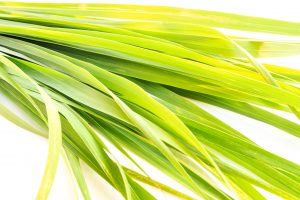
Here’s how you can use lemongrass to deter slugs:
1. Plant Lemongrass Near Vulnerable Plants: Consider planting lemongrass near plants that are particularly susceptible to slug damage. The strong fragrance of lemongrass can act as a natural deterrent, discouraging slugs from approaching those plants.
3. Lemongrass Pots and Containers: Grow lemongrass in pots or containers and place them strategically around your garden beds or near susceptible plants. Slugs are less likely to crawl into containers with lemongrass due to its scent.
4. Lemongrass Leaves: Scatter fresh lemongrass around the base of plants or in areas where you want to deter slugs. This can create a slug-repelling barrier.
5. Lemongrass Oil Spray: Create a lemongrass oil spray by steeping lemongrass leaves in water, then straining and spraying the liquid around your garden. You can also use lemongrass essential oil in a spray. Reapply after rain.
6. Companion Planting: Use lemongrass as a companion plant with vegetables and herbs that are prone to slug damage. The scent of lemongrass can help protect nearby plants.
7. Prune Lemongrass: Regularly prune your lemongrass plants to release their aromatic oils. This will enhance their slug-repelling properties.
Lemongrass not only serves as a natural slug deterrent but also has culinary uses, primarily in Asian cuisine. While lemongrass can be effective in deterring slugs, it’s essential to remember that no single method is always 100% effective.
9. Fennel: Fennel (Foeniculum vulgare) is an herb known for its distinctive licorice-like scent and flavor. While some gardeners have reported success using fennel to repel slugs, it’s important to note that its effectiveness as a slug deterrent can vary.
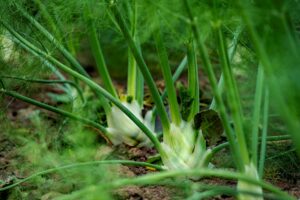
Here’s how you can use fennel to deter slugs:
1. Plant Fennel Near Vulnerable Plants: Consider planting fennel near plants that are particularly susceptible to slug damage. The strong fragrance of fennel may act as a natural deterrent, discouraging slugs from approaching those plants.
2. Fennel Pots and Containers: Grow fennel in pots or containers and place them strategically around your garden beds or near susceptible plants. Slugs are less likely to crawl into containers with fennel due to its scent.
3. Fennel Leaves: Scatter fresh fennel leaves around the base of plants or in areas where you want to deter slugs. This can create a slug-repelling barrier.
4. Fennel Seeds: Sprinkle crushed or ground fennel seeds around plants or areas with slug activity.
5. Companion Planting: Use fennel as a companion plant with vegetables and herbs that are prone to slug damage. The scent of fennel may help protect nearby plants.
6. Prune Fennel: Regularly prune your fennel plants to release their aromatic oils, which may enhance their slug-repelling properties.
It’s important to note that fennel is known for its vigorous growth and can become invasive in some regions. Be mindful of its growth habit and potential impact on neighboring plants when using it as a slug deterrent.
While fennel may contribute to slug control, it may not provide complete protection on its own. Combining fennel with other slug control methods and regularly monitoring your garden for slug activity can provide more comprehensive protection for your plants. Slug behavior can vary based on factors such as local conditions, slug species, and the specific plants in your garden, so experimenting with different methods is often necessary to find what works best for your situation.
10. Marigolds: Marigold plants (Tagetes spp.) are often used in gardening for their bright and cheerful blooms, but they can also serve as a natural deterrent for slugs and other garden pests. Marigolds contain compounds that emit a strong odor that slugs find unappealing.
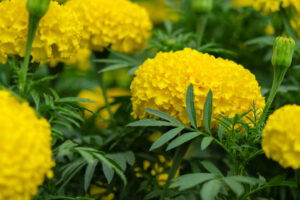
Here’s how you can use marigolds to help repel slugs in your garden:
1. Plant Marigolds Near Vulnerable Plants: Consider planting marigolds near plants that are particularly susceptible to slug damage. The strong fragrance of marigolds can act as a natural deterrent, discouraging slugs from approaching those plants.
3. Marigold Borders: Create borders or edges of marigolds around your garden beds or planters. Slugs are less likely to cross through areas with marigolds due to their scent.
4. Marigold Pots and Containers: Grow marigolds in pots or containers and place them strategically around your garden. Slugs are less likely to crawl into containers with marigolds due to their fragrance.
5. Marigold Varieties: While all marigolds have some level of slug-repelling properties, French marigolds (Tagetes patula) are often recommended for this purpose.
6. Companion Planting: Use marigolds as companion plants with vegetables and herbs that are prone to slug damage. The scent of marigolds can help protect nearby plants.
7. Deadhead Flowers: Regularly deadhead (remove spent flowers) from your marigold plants to encourage continuous blooming. Fresh blooms emit the strongest fragrance.
While marigolds can be an effective natural slug deterrent, it’s important to keep in mind that no single method is always 100% effective. Combining marigolds with other slug control techniques, such as those listed below, and regularly monitoring your garden for slug activity can provide more comprehensive protection for your plants.
Slug behavior can vary based on factors such as local conditions, slug species, and the specific plants in your garden, so experimenting with different methods is often necessary to find what works best for your situation.
11. Lamium (Dead Nettle): Lamium, commonly known as dead nettle, is a genus of plants that includes several species, many of which are grown for their attractive foliage and ground-covering abilities rather than their pest-repelling properties.
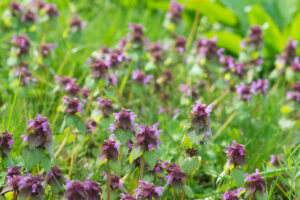
While lamium is not typically known as a slug repellent plant, there is some anecdotal evidence that certain varieties may have a level of slug resistance due to their fuzzy or hairy leaves, which can be less appealing to slugs.
If you want to use lamium as part of your slug control strategy, here’s how you can incorporate it into your garden:
1. Plant Lamium Near Vulnerable Plants: Consider planting lamium near plants that are particularly susceptible to slug damage. While it may not repel slugs completely, the presence of lamium may help create a less attractive environment for them.
3. Regular Inspection: Since lamium may not offer full protection against slugs, be sure to regularly inspect your garden for slug activity and manually remove any slugs you find.
4. Companion Planting: Use lamium as a companion plant with vegetables and herbs that are prone to slug damage. While lamium may not be the primary slug deterrent, it can serve as a ground cover that creates a barrier.
5. Additional Slug Control Methods: Combine the use of lamium with other slug control techniques, such as those listed below, to create a more effective slug management plan.
It’s important to note that lamium’s effectiveness in deterring slugs may vary depending on local conditions, slug species, and the specific plants in your garden. While lamium can be a valuable addition to your garden for its ornamental qualities and potential as a secondary slug deterrent, it’s advisable to use multiple slug control methods to better protect your plants from slug damage.
12. Geraniums: Geraniums (Pelargonium spp.) are flowering plants that can be effective in repelling slugs. Geraniums contain compounds that emit a strong scent that slugs find unappealing.
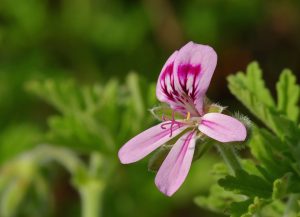
Here’s how you can use geraniums to help repel slugs in your garden:
1. Plant Geraniums Near Vulnerable Plants: Consider planting geraniums near plants that are particularly susceptible to slug damage. The strong fragrance of geraniums can act as a natural deterrent, discouraging slugs from approaching those plants.
3. Geranium Borders: Create borders or edges of geraniums around your garden beds or planters. Slugs are less likely to cross through areas with geraniums due to their scent.
4. Geranium Pots and Containers: Grow geraniums in pots or containers and place them strategically around your garden beds or near susceptible plants. Slugs are less likely to crawl into containers with geraniums due to their fragrance.
5. Deadhead Flowers: Regularly deadhead (remove spent flowers) from your geranium plants to encourage continuous blooming. Fresh blooms emit the strongest fragrance.
6. Companion Planting: Use geraniums as companion plants with vegetables and herbs that are prone to slug damage. The scent of geraniums can help protect nearby plants.
While geraniums can be an effective natural slug deterrent, it’s important to remember that no single method is always 100% effective. Combining geraniums with other slug control techniques and regularly monitoring your garden for slug activity can provide more comprehensive protection for your plants.
Keep in mind that while the plants on this list are the best plants to deter slugs, they may not provide complete protection on their own. Additionally, maintaining a clean and dry garden environment can help reduce slug populations.
Natural Slug Repellent
There are several natural slug repellents and deterrents that you can use in your garden to help keep slugs away without resorting to chemical pesticides.
Here are some of the best natural ways to repel slugs:
1. Copper Barriers: Slugs receive a mild electric shock when they come into contact with copper, which discourages them from crossing it. You can use copper tape, copper mesh, or foil to create copper barriers around plant pots, the base of plant stems, or garden beds.
2. Beer Trap: Bury shallow containers (like jar lids or small bowls) in the ground at soil level and fill them with beer. Slugs are attracted to the scent of beer, crawl in, and drown. Empty and refill the slug trap regularly.
3. Coffee Grounds: Coffee grounds can create an abrasive barrier that slugs don’t like to crawl over. Spread used coffee grounds around the base of plants or garden beds.
4. Eggshells: Crushed eggshells can create a sharp, rough surface that slugs prefer to avoid. Sprinkle crushed eggshells around vulnerable plants.
5. Diatomaceous Earth: Diatomaceous earth is a fine, powder-like substance that is harmless to humans and pets but can be deadly to slugs. Sprinkle it around plants, making sure it stays dry, as moisture reduces its effectiveness.
6. Salt (Use with Caution): Salt can kill slugs, but it should be used sparingly and with caution, as it can also harm plants and soil if overused. A light dusting of salt around slug-prone areas can deter them.
7. Natural Predators: Encourage natural slug predators like birds, frogs, toads, and ground beetles to inhabit your garden. Provide suitable habitats and food sources for these creatures.
8. Hand-Picking: Go out at night or during damp weather with a flashlight and manually pick off slugs. Dispose of them far from your garden to prevent their return.
9. Mulch: Use mulch like straw or wood chips to create a barrier between the soil and the slugs. This can make it more difficult for them to reach your plants.
Additional Slug Repellent Ideas
Here are some additional ways to repel slugs from your garden or outdoor spaces:
1. Cinnamon: Sprinkle ground cinnamon around the base of plants. Slugs dislike the strong scent of cinnamon and will often avoid crossing it.
2. Crushed Seashells: Crushed seashells, like crushed eggshells, create a rough surface that slugs find difficult to crawl over. Spread them around the plants you want to protect.
3. Baking Soda: Sprinkle a thin layer of baking soda around plants. It can act as a barrier that irritates the slime trails of slugs and repels them.
4. Sandpaper Strips: Place strips of coarse sandpaper, rough side up, around the base of plants or garden beds. This makes a good slug shield as the slugs are deterred by the abrasive surface.
5. Natural Essential Oils: Certain essential oils, such as cedarwood, pine, and eucalyptus, have strong scents that can deter slugs. Dilute a few drops of essential oil in water and spray it around your garden.
6. Grit or Sand: Spread a layer of fine grit or sand around plants. This can be uncomfortable for slugs to crawl over and may deter them.
7. Ducks and Chickens: If you have the space and proper conditions, ducks and chickens are natural slug predators and can help control slug populations.
8. Nematodes: Beneficial nematodes, such as Steinernema and Heterorhabditis species, can be applied to the soil to control slug populations. These microscopic organisms are natural predators of slugs.
9. Dry Leaves or Straw: Create a dry and uncomfortable surface for slugs by spreading dry leaves or straw around your garden. Slugs prefer moist environments and may avoid dry surfaces.
10. Pet Hair: Scatter pet hair, such as dog or cat hair, around your garden. The texture and scent can deter slugs.
11. Trap Boards: Place boards or pieces of wood on the ground in your garden. Slugs will often seek shelter beneath them during the day, making it easier to collect and dispose of them.
12. Watering in the Morning: Watering your garden in the morning rather than the evening can help reduce slug activity, as slugs are more active at night.
Remember that the effectiveness of these methods may vary depending on the slug species in your area and local environmental conditions. Experiment with different techniques and combinations to find the best approach for your garden. Regular monitoring and maintenance are key to successful slug control.
Plants That Repel
If you are looking to repel other animals from your yard and garden be sure to check out:

